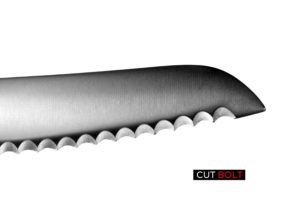Are you looking for a way to give your knife a unique, rustic look? Patina is the word for a layer of discoloration that naturally forms on the surface of metals over time. However, if you want to speed up the process, you can learn how to force a patina on a knife.
In this blog post, we’ll explore the various methods and techniques you can use to achieve the perfect patina on your knife.
In this Article:

What is the patina of a knife
A patina is generally defined as “the surface appearance of something that has become beautiful, especially with time or use.” The word was first used by the Italians in the 17th century to refer to the green film that forms on the surface of copper.
The original word is Latin and refers to a “shallow plate”, so the Italian meaning probably arose from observing the green film that formed on copper plates.
By the middle of the 18th century and the beginning of the 20th century, the use of the term “patina” in English applied to the change in coloration and texture of a variety of materials over time and with normal use.
In metals, patina is more specifically defined as the coating of chemical components due to exposure to various atmospheric elements such as oxygen, water, carbon dioxide, and others. Essentially a form of mild corrosion, these chemicals can take the form of oxides, carbonates, sulfides, or sulfates.
Although patinas on metals develop naturally, they can also be accelerated or created on purpose through the application of chemicals. This artistic process is called patination and can be used to create a layer that is protective and attractive at the same time.
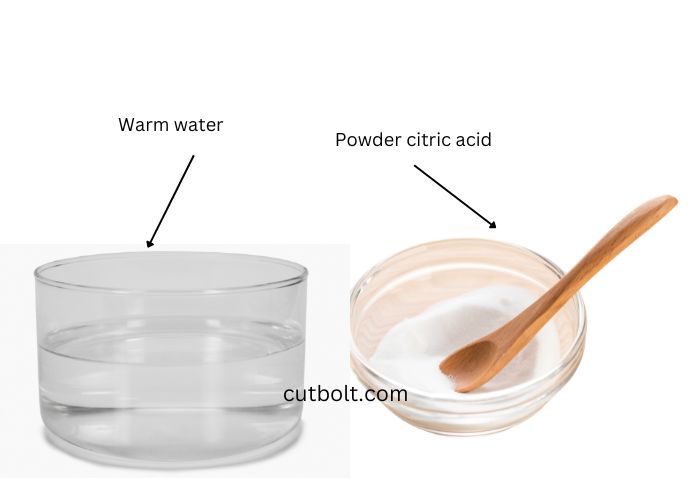
How does patina affect knives and razors?
For serious cutlery enthusiasts, it is important to know the patinas – especially in relation to the blades. Stainless steel blades with a high volume of chrome produce chromium oxide, a thin layer that covers and protects them from rust and patination.
Steels are not only vulnerable to rust, but will also develop patina in the form of black iron oxide over time.
Red iron oxide:
Red iron oxide or ferric oxide (Fe203) is what we commonly known as rust. It is formed when iron reacts with oxygen in the presence of water. Iron oxide destroys steel because the oxide molecules have a larger volume than the underlying iron atoms. Eventually, the oxide molecule breaks away, exposing the fresh steel and compromising the physical structure of the material.
Black iron oxide
Black iron oxide (Fe304), however, is different. Also known as magnetite, it is a grey/black discoloration of steel caused by its exposure to oxygen. This discoloration occurs naturally with tool steels because they do not contain the chromium necessary to create a protective chromium oxide layer. Unlike red iron oxide, black iron oxide does not flake off and serves as a protective layer to help prevent rust.
This layer is, in fact, what creates the patina on steel blades and, over time, gives them a rich appearance and quality. It is common for non-stainless knives.
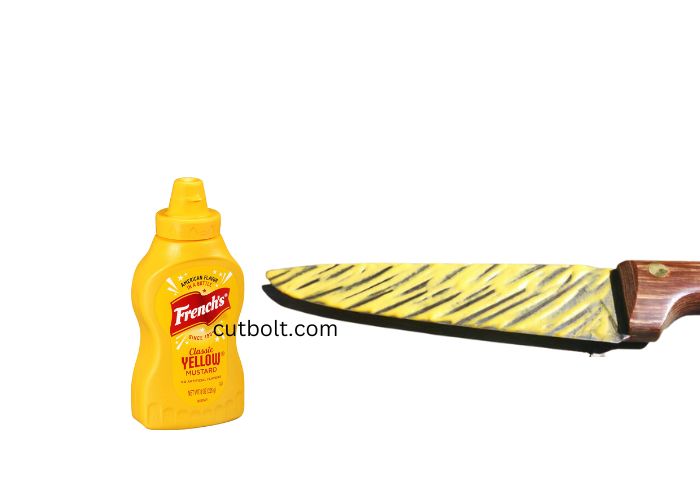
Related: Steel knives vs Ceramic knives
Which steel is easier to force a patina on?
Steel is an incredibly versatile material, and can be used to create a wide range of products. But which steel is best when it comes to forcing patina, the protective layer of oxidation that gives steel its unique look and feel?
We can force the patina on any steel that is reactive to acids. In general, we can force it on any steel except stainless steel.
Why should knives have patina?
The patina is an advantage for the conservation of the leaf because it is a chemical barrier against the action of other oxidizing agents. Unlike active rust, it protects the steel inside the blade.
In addition to being an added element of protection, patina is a decorative element that adds history and personality to the blades of our knives.
How can you force a patina?
We can force a patina on a knife by applying mild acid to the leaf surface for a short period of time.
A safe and inexpensive option is to prepare a solution of warm water and citric acid.
Here is the process to force a patina on a knife:
- We need a container (horizontal or vertical) where the entire blade of the knife fits inside.
- Then we will put the sheet inside and fill the container with warm water until the entire surface is submerged under water.
- Mix a few spoons of powdered citric acid in the water.
- Once we have it well dissolved, we will insert the blade of the knife again and leave it for 15 to 30 minutes.
- Take the knife out after 15 to 30 minutes, rinse it under the tap and let it air dry for a few seconds.
If the patina has the desired intensity, we can stop the oxidation process by applying oil to the surface of the blade.
If we want to give it more intensity, we will repeat the process once again.
Repeat the process until we achieve the desired result. As it is a very mild acid, it will not damage the knife blade.
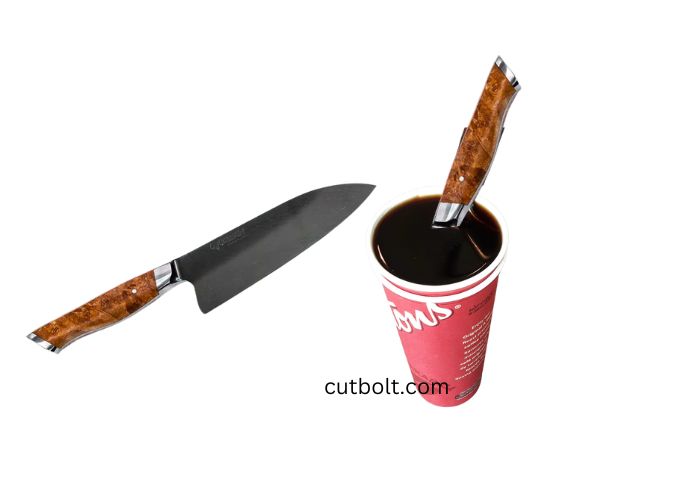
What to keep in mind before forcing patina?
Before forcing a patina, keep in mind that if the blade has some kind of special finish, such as kurouchi or textures, these can be damaged by the action of acid. In those cases, the acid can be applied only to the edge area using wet paper.
When finished, any oil can be used to protect the blade while the patina stabilizes. Linseed oil, camellia oil, mineral oil, or WD-40 are the most popular options. After applying it, it should not be removed from the leaf for at least 5-10 minutes.
Remember that if the oil is not suitable for human consumption, the blade should be thoroughly cleaned with soap and water before use.
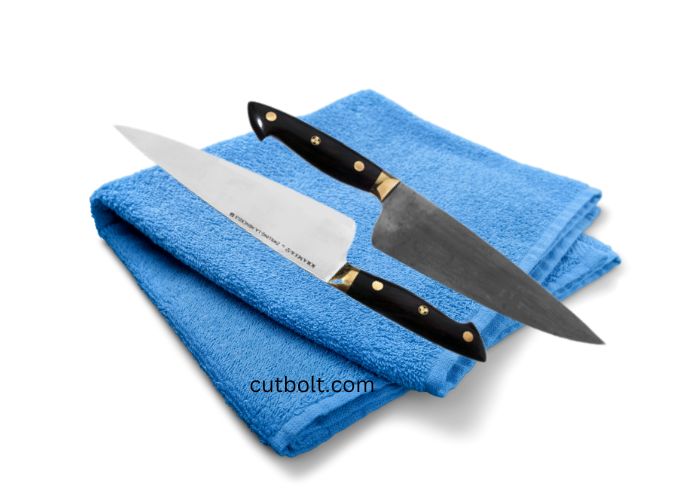
Alternative way to force a patina on a knife
Other options that can be used to force the patina of a knife are mustard or coffee.
Here is how alternatives you have to force patina
Forcing patina with mustard
Mustard contains vinegar that marks the leaf.
As it is a semi-solid substance, people apply it in uneven lumps on the leaf. This way they manage to give it a unique pattern with marks of different intensity.
Different types of mustard give different results due to the type of vinegar used and the concentration of the mustard.
Forcing patina with coffee
- Take a container similar to the citric acid method.
- Prepare a good quantity of black coffee, well concentrated, enough to cover the entire leaf.
- Put the blade of the knife inside and let it rest for eight hours.
- At the end, we will take it out, rinse it with soap and water and protect the leaf for a few minutes with oil.
As with citric acid, this method can damage aesthetic finishes such as kurouchi or texture.
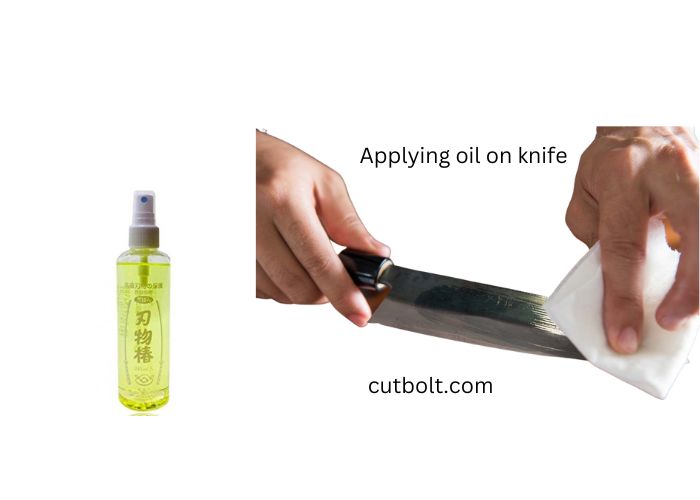
How to remove the patina from a knife
Although it is a protective element, there may be times when we want to remove the patina. Most often this is for aesthetic reasons, as some people prefer a shiny blade.
Being a neutral, stable and superficial oxide layer, its removal is very simple.
All you have to do is lightly sand the knife surface with any abrasive material. Water-based sandpaper, Scotch Brite pads or similar can be used for this.
FAQs: How to force a patina on a knife/
What is a patina on a knife?
A patina is a layer of discoloration or oxidation that forms on the surface of a knife blade over time.
Why would you want to force a patina on a knife?
Forcing a patina can be done to give a new knife a more vintage or “broken-in” look, or to protect the blade from rust and corrosion.
What materials are needed to force a patina on a knife?
Common materials used to force a patina include lemon juice, vinegar, mustard, hot sauce, and gun blue.
How do you prepare the knife blade for the patina process?
The blade should be cleaned and polished before applying the patina solution to ensure the best results.
How do you apply the patina solution to the knife blade?
The solution can be applied with a cloth or brush, and should be worked into the blade evenly.
How long does the patina process take?
The time it takes for the patina to form can vary depending on the solution used and the desired level of discoloration.
How do you know when the patina is complete?
The patina is complete when the desired level of discoloration is achieved.
How do you protect the patina once it’s formed?
The patina can be protected by applying a coat of oil or wax to the blade.



